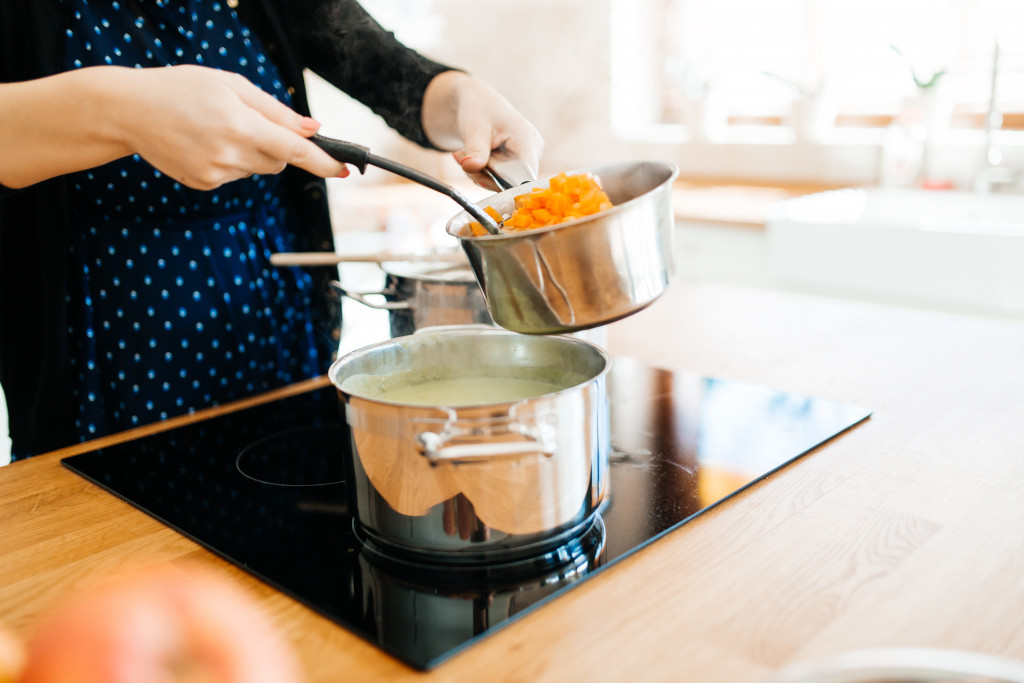During the COVID-19 pandemic, many businesses were closed. The food and beverage industry was among the hardest hit by the restrictions meant to slow the spread of the virus. Dining indoors became a public health risk. Therefore, most had to find other ways to continue operations while the stores remained closed.
In the past year, delivery services thrived. While people stayed at home, they ordered all kinds of things from e-commerce apps and sites. These include food and beverages. A new type of business was born—ghost kitchens.
What Are Ghost Kitchens?
The so-called ghost kitchens were perfect for the pandemic. This type of food and beverage service does not have waiters or cashiers. There is no brick-and-mortar store where patrons can sit down and have a meal.
They only serve those who want to have their meals delivered to their homes.
It is hard to pinpoint when exactly the first ghost kitchen opened, but the trend accelerated during the pandemic when most establishments were closed. Many restaurants pivoted to carry-out and delivery models to survive the lockdowns. Others turned to ghost kitchens to maintain cash flow.
Even national chains such as Chili’s, Applebee’s, and Chuck E. Cheese operated with ghost kitchens during the pandemic as a way to test out menu items and as a way to continue operations despite restaurant closures.
Brinker International, the owner of Chili’s, opened a delivery-only chicken wings chain called “It’s Just Wings.” Customers placed their orders via DoorDash.
Meanwhile, Chuck E. Cheese became Pasqually’s, a delivery-only chain selling pizza and buffalo wings. Customers sent orders through food delivery services such as Grubhub and UberEats.
Others that do not have the resources of a national chain are going to companies that operate multiple facilities under one roof. For example, Uber founder and CEO Travis Kalanick started CloudKitchens. Its aim is to lease real estate to entrepreneurs who want to open their delivery-only establishments.
The ghost kitchen business is estimated to be worth $1 trillion by 2030. There is a lot of potential for the market, even after the pandemic. Many companies expect consumers to continue the habit of ordering food and beverages through delivery apps.

How to Open a Ghost Kitchen?
Naturally, many entrepreneurs are already looking into opening their ghost kitchens. There is an existing demand for it, and there is a lower commitment than a regular restaurant because there is no storefront or dine-in services to maintain. However, it is still a business that has its own set of requirements to operate.
First, you’ll still need a location. While there won’t be a physical dine-in space, the ghost kitchen should be accessible and within proximity to your target market. That way, the food arrives quickly at the customer’s address.
Second, the ghost kitchen does not have to be the size of a regular restaurant. However, there should be ample space for staff to move around. Likely, more than one person will cook and prepare orders, especially if the business snowballs. If you are operating on your own without renting a space that also provides equipment, you will need tools, too. You will have to invest in an oven and a stove top, a refrigerator, a commercial meat slicer, pans and knives, and other kitchen tools and utensils.
Finally, your ghost kitchen still has to follow local and federal licensing and health and safety regulations. The health department can visit and inspect the space and review the menu to ensure that the business complies with rules and standards. After all, you still serve food and beverages to consumers. No one wants customers to fall ill because your kitchen failed to maintain cleanliness and care during production.
How to Advertise Your Ghost Kitchen
Like other businesses, a ghost kitchen still requires advertising and marketing. There are so many food and beverage establishments around, all competing for customer attention. A ghost kitchen, especially one without the backing of a national chain, needs to stand out.
Since the business is delivery only, entrepreneurs should focus on digital strategies. Social media platforms such as Instagram and Facebook are great for reaching out to consumers within the same neighborhood. Give your offerings the spotlight, and try to encourage user-generated content to boost trust.
But you can also adopt more traditional strategies such as flyers and banners, direct mail, and print and television media. A review from a local newspaper, for example, will get the word out about the new business.
The popularity of ghost kitchens was an effect of the COVID-19 pandemic. It will likely continue to be popular after the global public health crisis will eventually end.

